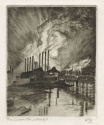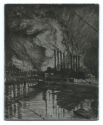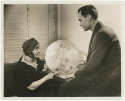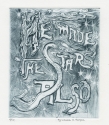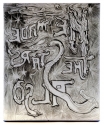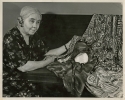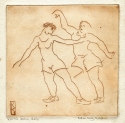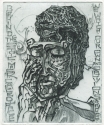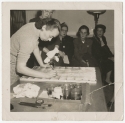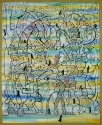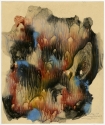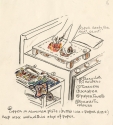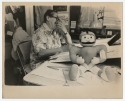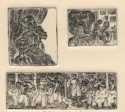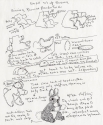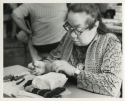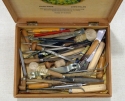In 2011 Georgetown University Library was awarded a Cataloging Hidden Special Collections and Archives grant from The Andrew W. Mellon Foundation and the Council on Library and Information Resources (CLIR), to catalog the personal, working collections of six significant 20th century American printmakers: Helen King Boyer, Louise Miller Boyer, John De Pol, Marguerite Kumm, Kathleen Spagnolo and Lynd Ward. (The impetus for this national grant program, created by the Foundation and CLIR in 2008, was a widely shared acknowledgement of the need to direct cataloging methods toward greater standardization, efficiency, and scholarly impact. The program was designed to fund the creation of records for unique cultural heritage objects that would be made available online.)
The six broadly unfamiliar graphic artists in this group warrant far greater public recognition than they have received. While both Lynd Ward and John De Pol are considered masters of wood engraving and illustration, their public reputations are generally confined to printmaking circles. The four female artists of the group—Helen and Louise Boyer, Marguerite Kumm and Kathleen Spagnolo—have largely been overlooked due to the bias against women that predominated in American art history during most of the 20th century. In fact Georgetown University holds the only significant public collections of graphic works by Kathleen Spagnolo and Marguerite Kumm. All four women were able to sustain careers in the graphic arts at a time when female artists were often dismissed. Though they each received honors and awards for their work during their lifetime, their achievements have gone unrecognized since that time.
In the absence of a lasting artistic reputation, the survival of an artist’s legacy may be dependent upon the archiving of their body of work. It was the instinct of these artists to preserve the materials and record the circumstances of their artistic careers. Their personal, working art collections include not-fully-realized works of art, showcasing experimental concepts and rejected ideas. Such materials hold enormous potential for researchers and offer excellent case-studies for teaching projects. Choosing to display such items for exhibition was an important means of showcasing the range of material that was unearthed during the cataloging process. These key items serve to unravel the technical working practices of each artist.
The associated personal papers of these artists proved to be an instrumental source of information for cataloging their artworks. Unique items such as diaries, correspondence, photographs, exhibition catalogs and newspaper articles revealed fascinating new details about the lives of the printmakers. These records brought to light the personalities of the artists, enabling uniquely personal interpretations. Wherever possible, our intention throughout the exhibition has been to reveal the artists’ voices and present their own explanation of their work. This source material provided many of the artist quotes included in this catalog.
As our understanding of each individual artist grew we also became aware of certain connections between the six artists, and other artists represented in the Georgetown University Library collections. In original correspondence in the John De Pol collection, the artist recalls his first meeting with Lynd Ward at L.F. White Co., in New York, as an apprentice clerk learning the printing business: “I was new at engraving, he was a master. We became good friends.” Furthermore, in a card sent to Ward in 1953 discovered among the Lynd Ward correspondence, De Pol expresses, “I have a great many of your prints and have enjoyed them all; Prelude to a Million Years is my favorite.”
Further connections between the six artists were uncovered whilst researching collection papers. Exhibition catalogs from the Helen King Boyer Papers revealed that Marguerite Kumm exhibited her work alongside Louise and Helen Boyer in a number of nationwide exhibitions during the 1940s. The catalogs also reveal that the three artists were listing their work for very similar prices. Original correspondence revealed that Kathleen Spagnolo was a friend of prominent Washington, D.C. artist Prentiss Taylor, whose entire graphic oeuvre is represented at Georgetown. Taylor owned several of Spagnolo’s prints, including the aquatint Summer Place, which he later donated to Georgetown. Master etcher John Taylor Arms was a great supporter of the Boyers’ work, evidenced by a number of original letters discovered in the Helen King Boyer Papers, including a letter congratulating Helen Boyer on winning a Louis Comfort Tiffany Foundation grant in 1949.
Prior to cataloging, these six printmaking collections were almost completely “hidden.” The undescribed or under-described materials had previously received only partial exposure through exhibitions, and were therefore undiscoverable for researchers. This ground-breaking project, which required three part-time staff members over two years, piloted the use of EmbARK, a new art collections management database, with which curators and project staff developed a customized database template for cataloging the unique, physical characteristics of each object using a standardized vocabulary. The project was successfully completed in November 2014. Staff presented a paper on the methodologies employed for cataloging these unique collections at the 2015 Cataloging Hidden Special Collections and Archives Symposium: Innovation, Collaboration, and Models in Philadelphia. The Undiscovered Printmakers project has sought to promote the collective dexterity and innovation of all six artists of this group, and to provide a platform for encouraging further attention to their work as nationally important graphic artists.
Katharine Malcolm
Exhibition Curator
Self-Portrait from the first edition of Gods' Man
Lynd Ward
Wood engraving on paper
1929
153 x 104 mm
1981.1.959
Gift of Robin Ward Savage and Nanda Weedon Ward
Trial proofs for Gods' Man
Lynd Ward
Wood engraving on paper
1929
127 x 90 mm (approx.)
1981.1.947, 1981.1.948, 1981.1.950, 1981.1.951
Gift of Robin Ward Savage and Nanda Weedon Ward
Gods’ Man was the first American wordless novel, and is seen as a precursor of, and influence on, the development of the graphic novel. Through 139 images Ward tells the tale of an artist who signs away his soul for a magic paintbrush. The psychological masterpiece’s haunting images, relating to life’s struggles in love and work, found a ready audience on the brink of the Great Depression. The book appeared a week before the Wall Street crash of 1929. Despite the timing, the book sold well and has remained the best-selling American wordless novel of all time.
Wood blocks for Gods' Man
Lynd Ward
1929
128 x 90 mm (approx.)
1985.2.209, 1985.2.210, 1985.2.212, 1985.2.213
Gods' Man
Lynd Ward
New York: J. Cape and H. Smith
1929
NE1215.W3 A4 1929
Landschaften und stimmungen: 60 holzschnitte von Frans Masereel
Frans Masereel
München: K. Wolff
1929
NE1217.M3 A3 1929
Madman's Drum book dummy
Lynd Ward
ca. 1930
245 x 165 mm
1985.2.320
Ward produced this book dummy for his second wordless novel Madman’s Drum. It contains a full set of 124 wood engraved proofs printed on Japanese tissue, including the title page and chapter breaks.
Trial proofs for Song Without Words
Lynd Ward
Wood engraving on paper
1936
142 x 90 mm (approx.)
1981.1.981, 1985.2.152, 1981.1.987, 1981.1.988
Gift of Robin Ward Savage and Nanda Weedon Ward
Ward’s third wordless novel tells the story of a pregnant woman’s anguish over bringing her baby into the world. The woman imagines terrifying scenes of fascism and death that would bring harm to her child. Ultimately, however, she stands defiantly against the forces that threaten her. The theme reflects anxieties that Ward and his wife experienced during McNeer’s pregnancy with their second child.
Wood blocks for Song Without Words
Lynd Ward
ca. 1936
140 x 90 mm (approx.)
1985.2.129, 1985.2.135, 1985.2.142.a and 1985.2.142.b, 1985.2.144
Sketch and proof from Dance of the Hours [a]
Lynd Ward
Crayon on paper
200 x 138 mm
1985.1.287
Wood engraving on Japanese tissue
206 x 127 mm
1985.1.399
Gift of May McNeer Ward
Ward left a seventh, incomplete wordless novel at the time of his death in 1985. The 26 completed wood engravings (out of a planned total of 44) were published in a limited edition in 2001, as Lynd Ward’s Last, Unfinished, Wordless Novel. These sketches and proofs from Ward’s personal collection are part of this narrative, listed under the title Dance of the Hours. The corresponding crayon sketches and trial proofs demonstrate the intricate development of each design between the stages of sketching and wood engraving.
Sketch and proof from Dance of the Hours [b]
Lynd Ward
Crayon with pencil on illustration board
167 x 148 mm
1985.1.286
Wood engraving on Japanese tissue
203 x 126 mm
1985.1.469
Gift of May McNeer Ward
Lynd Ward's Last, Unfinished, Wordless Novel
Lynd Ward
New Brunswick, NJ: New Jersey Rare Book Symposium, Special Collections and University Archives, Rutgers University Libraries
2001
NE1112.W37 A4 2001
Illustrations from The Swiss Family Robinson
Lynd Ward
Ink on illustration board
ca. 1949
126 x 139 mm (approx.)
1981.1.112, 1981.1.113
Gift of Robin Ward Savage and Nanda Weedon Ward
Unpublished illustration for Prince Bantam by May McNeer
Lynd Ward
Watercolor on illustration board
1929
305 x 230 mm
1981.1.193
Gift of Robin Ward Savage and Nanda Weedon Ward
Ward began collaborating with his wife in 1929, and together that year they produced Prince Bantam, a retelling of a Japanese legend. This was the first time Ward integrated his illustrations into a story. This illustration was ultimately not chosen for publication, although parts of the design are very similar to the image used for the end papers of the book (below).
Storyboard sketches for The High-Flying Hat by Nanda and Lynd Ward
Lynd Ward
Ink on paper
ca. 1956
51x 82 mm (approx.)
1981.1.747, 1981.1.760, 1981.1.762, 1981.1.840, 1981.1.836, 1981.1.861
Gift of Robin Ward Savage and Nanda Weedon Ward
List of chapter headings with sketches for Up a Crooked River by May McNeer
Lynd Ward
Ink on paper
ca. 1952
275 x 206 mm
1981.1.382
Gift of Robin Ward Savage and Nanda Weedon Ward
Illustrations from a book dummy for Go Tim Go! By May McNeer
Lynd Ward
Gouache with pencil on paper
ca. 1967
276 x 346 mm
1981.1.704
240 x 420 mm
1981.1.726
Gift of Robin Ward Savage and Nanda Weedon Ward
Trial proofs for The Ballad of Reading Gaol by Oscar Wilde
Lynd Ward
Mezzotint on paper
ca. 1928
149 x 99 mm
1981.1.1039, 1981.1.1043, 1981.1.1047
Gift of Robin Ward Savage and Nanda Weedon Ward
Mezzotint is an intaglio technique that offers a rich, distinctive quality by producing half-tones. A metal tool with tiny teeth called a “rocker” is used to produce thousands of tiny pits in the printing plate, which hold the ink when the face of the plate is wiped clean before printing.
Untitled [the monster sees his reflection]
Lynd Ward
Wood engraving on paper
162 x 102 mm
1981.1.1088
Gift of Robin Ward Savage and Nanda Weedon Ward
Ward’s wood engravings for the 1934 edition of Mary Shelley’s Frankenstein are considered among the finest ever published in America.
Proof, page 24 of North Star Shining
Lynd Ward
Lithograph on paper
ca. 1947
200 x 125 mm
1985.1.341
Gift of May McNeer Ward
In his accompanying illustrations to this pictorial record of black history, Ward expresses a deep empathy for human rights and his outrage at racial injustice. These themes are communicated across many of his stories.
Cup of Sky
Lynd Ward
Wood engraving on paper
1965
506 x 300 mm
1981.1.770
Gift of Robin Ward Savage and Nanda Weedon Ward
Ward’s bold, individual prints were made during the later years of his life, and perhaps best express the dynamic graphic design qualities he was able to achieve in the medium of wood engraving. Demonstrating incredible visual impact in tone, texture, scale and three-dimensionality, they convey that distinctive sense of gravitas evoked in so much of Ward’s work.
Face to Face: Twelve Contemporary American Artists Interpret Themselves in a Limited Edition of Original Wood Engravings
Great Barrington, MA: Penmaen-Busyhaus Publications
1985
####.1.6223
Gift of Jack Pierson in memory of Robert Martin Purcell
Untitled, from the portfolio Face to Face
Lynd Ward
Wood engraving on paper
1984
ed. 200
208 x 128 mm
####.1.6223.12
Gift of Jack Pierson in memory of Robert Martin Purcell
Thicket
Lynd Ward
Wood engraving on paper
380 x 305 mm
1981.1.810
Gift of Robin Ward Savage and Nanda Weedon Ward
Self-Portrait
Kathleen Spagnolo
Aquatint with etching on paper
1977
4/10
444 x 597 mm
2002.1.36
Gift of Jon and Theresa Spagnolo in memory of Kathleen and Frank Spagnolo
Illustrations for The Man who was Thursday by G. K. Chesterton
Kathleen Spagnolo
Ink on paper
before 1945
162 x 140 mm (approx)
2002.1.59, 2002.1.58, 2002.1.60, 20021.61, 2002.1.62, 2002.1.63
Gift of Jon and Theresa Spagnolo in memory of Kathleen and Frank Spagnolo
Spagnolo began her artistic career as a freelance illustrator for adult and children’s books and magazines. She produced six ink illustration proofs for G. K. Chesterton’s The Man Who Was Thursday, a metaphysical thriller set in Edwardian-era London. The style of depiction and scale of these ink drawings are quite distinct from the rest of her work.
The SS America: From Dover to New York
Kathleen Spagnolo
Ink on Masonite
350 x 520 mm
2002.1.57
Gift of Jon and Theresa Spagnolo in memory of Kathleen and Frank Spagnolo
The crossing of the SS America, from Dover to New York, on the return leg of her maiden crossing in 1946. The artist was aboard the ship, as an English war-bride, awaiting the start of a new life in America. The miniaturized and manipulated scale of the geography of two cities on either side of the Atlantic recalls the couple’s experiences making terrain models during World War II.
Spectre
Kathleen Spagnolo
Etching with multi-level viscosity printing on paper
1964
Artist's proof II
450 x 603 mm
2002.1.19
Gift of Jon and Theresa Spagnolo in memory of Kathleen and Frank Spagnolo
Christmas cards
Kathleen Spagnolo
various
2002.1.45, 2002.1.40, 2002.1.39
Gift of Jon and Theresa Spagnolo in memory of Kathleen and Frank Spagnolo
Architecture and landscape were often central subjects in Spagnolo’s work. In 1953 she produced illustrations for a publicity brochure for Hollin Hills, the award-winning mid-century modern neighborhood in Alexandria, Virginia where she and her husband lived. Their house doubled as an artists’ studio, and Spagnolo was inspired to produce imagery of her own and neighboring gardens and houses, which are still used today to promote the Hollin Hills community.
Blue & Sienna
Kathleen Spagnolo
Etching with multi-level viscosity printing on paper
1975
5/10
500 x 680 mm
2002.1.2
Gift of Jon and Theresa Spagnolo in memory of Kathleen and Frank Spagnolo
This montage of natural imagery and abstract shapes include images of trees from Spagnolo’s own garden. The Teton Range of the Rocky Mountains is depicted in the top right hand corner, and the center strip features “The Ship of Death,” after the poem of the same title by D.H. Lawrence.
Face to Face
Kathleen Spagnolo
Etching with multi-level viscosity printing on paper
1962
Artist's proof IV
450 x 558 mm
2002.1.13
Gift of Jon and Theresa Spagnolo in memory of Kathleen and Frank Spagnolo
This busy composition combines vibrant color with both geometric forms and representational figures. Spagnolo often incorporated window frames into her designs, to suggest depth and formal perspective.
Megiddo
Kathleen Spagnolo
Etching with multi-level viscosity printing on paper
1968
443 x 297 mm
2002.1.17
Gift of Jon and Theresa Spagnolo in memory of Kathleen and Frank Spagnolo
Holy Land
Kathleen Spagnolo
Etching with multi-level viscosity printing on paper
1967
Artist's proof
572 x 718 mm
2002.1.16
Gift of Jon and Theresa Spagnolo in memory of Kathleen and Frank Spagnolo
Spagnolo took vacations back to Europe to see her family in England, and in 1967 she and her husband traveled to the Middle East. On other occasions they visited New York State and Cape Cod. Ideas and imagery from these trips were an inspiration and are interpreted in her work.
Summer Place
Kathleen Spagnolo
Aquatint with etching on paper
1975
4/6
450 x 600 mm
2001.10.1
Gift of Roderick Quiroz
This print was previously owned by prominent Washington, D.C. artist, Prentiss Taylor. Spagnolo and Taylor were friends and exhibited work together at the Atheneum in Alexandria in 1969, alongside others including Robert Gates, her tutor at American University.
Twilight of the Gods
Kathleen Spagnolo
Etching with multi-level viscosity printing on paper
1972
Artist's proof
600 x 440 mm
2002.1.25
Washington Print Club Collection
This is one of several different color proofs that Spagnolo made of this print. It was chosen to illustrate the front cover of the spring 2002 Washington Print Club Quarterly. The abstract design of the Classical architectural set against an opaque black background accentuates the three dimensional and textural qualities that can be achieved with multi-level viscosity printing.
A Midsummer Night's Dream
Kathleen Spagnolo
Wood engraving on paper
Artist's proof
155 x 208 mm
2002.1.46
Gift of Jon and Theresa Spagnolo in memory of Kathleen and Frank Spagnolo
The diversity of Spagnolo’s style is exemplified in two different renditions of the same scene from Shakespeare’s play. In both images Titania, Queen of the Fairies, is depicted lying asleep in the forest, surrounded by seven other central characters. Spagnolo uses a traditional wood engraving technique here to illustrate the figures in a representational manner, producing a harmony of curved forms in the design. In contrast, her etching below uses layers of color to portray the figures within an abstract, geometric design. A very different effect is produced, breaking up formal elements within the scene, and placing more emphasis on color and texture.
A Midsummer Night's Dream
Kathleen Spagnolo
Etching with multi-level viscosity printing on paper
Artist's proof 2
274 x 413 mm
2002.1.1
Gift of Jon and Theresa Spagnolo in memory of Kathleen and Frank Spagnolo
Ghosts
Kathleen Spagnolo
Wood engraving on paper
180 x 127 mm
2002.1.49
Gift of Jon and Theresa Spagnolo in memory of Kathleen and Frank Spagnolo
Spagnolo’s talents also extended to wood engraving. Her compositions in the medium demonstrate her superb sense of design and ability to achieve three-dimensionality in her work by different means. The elegant forms and sense of movement created in these three examples of her work (here and below two) showcase her excellent draftsmanship.
Revolving Doors at Woodies
Kathleen Spagnolo
Wood engraving on paper
208 x 155 mm
2002.1.51
Gift of Jon and Theresa Spagnolo in memory of Kathleen and Frank Spagnolo
You and I and Amyas
Kathleen Spagnolo
Etching with multi-level viscosity printing on paper
1962
550 x 453 mm
2002.1.31
Gift of Jon and Theresa Spagnolo in memory of Kathleen and Frank Spagnolo
The title comes from an anonymous 16th century English poem Latet Anguis. The second printed layer of leaves in brown ink lends texture and depth to the image. Spagnolo achieves superb tonal effects showcasing the complexity of the viscosity printing technique.
Illustration for House Beautiful cover competition
Marguerite Elizabeth Kumm
Gouache with ink on paper
1929
505 x 385 mm
1992.2.981
Kumm began her artistic career working as an illustrator. She received an honorable mention in the annual House Beautiful cover competition of 1929. Her watercolor design was chosen to illustrate the cover of the magazine the next year (below).
House Beautiful magazine with Kumm's illustration on the cover
Boston, MA: House Beautiful Company, MacGregor Jenkins
Vol. LXVIII, No. 1 (July 1930)
Marguerite Kumm Papers
Detail from Las Meninas by Velázquez
Marguerite Elizabeth Kumm
Pencil (graphite) on paper
1929
175 x 132 mm
1992.2.870
Detail from The Forge of Vulcan by Velázquez
Marguerite Elizabeth Kumm
Pencil (graphite) on paper
1929
180 x 130 mm
1992.2.869
Horned Dinosaur [study for Sunday Afternoon]
Marguerite Elizabeth Kumm
Pencil (graphite) on paper
1938
90 x 212 mm
1992.2.484
Winged Dinosaur [study for Sunday Afternoon]
Marguerite Elizabeth Kumm
Pencil (graphite) on paper
1938
135 x 186 mm
1992.2.485
Sunday Afternoon
Marguerite Elizabeth Kumm
Wood engraving on paper
1942
198 x 315 mm
1992.2.679
Kumm loved to depict people in everyday situations, such as enjoying an afternoon at the museum. Her third linocut print was exhibited in a number of juried national print shows, including the National Academy of Design, NY, 1942, 1st Pennell Show, Library of Congress, DC, 1943, American Federation of Arts travelling show, 1943 – 1944, Carnegie Museum, Pittsburgh, 1943, Artists for Victory, Metropolitan Museum, NY, 1943, as well as many regional shows from coast to coast, from 1942 to 1955.
Noah's Ark
Marguerite Elizabeth Kumm
Wood engraving on paper
1949
ed. 75
55 x 65 mm
1992.2.332
Kumm’s first wood engraving was exhibited at Society of American Etchers Annual Show in New York in 1950 and traveling show the subsequent year, as well as all solo traveling shows from 1951 to 1953.
Visitors' Gallery, US Senate
Marguerite Elizabeth Kumm
Etching on paper
1938
99 x 123 mm
1992.2.569
Kumm’s first etching was included in the "One Hundred Best Prints of the Year" by the Society of American Etchers, and chosen as part of the 1939 World’s Fair art exhibition in New York. The Washington Post featured an article about the exhibition in 1979, quoting Kumm on being one of the chosen artists: “I felt like a jumping bean—elated, thrilled. I could hardly believe my luck.” The print was also purchased by the Valentine Museum in Richmond, Virginia the same year.
Capitol Corridor
Marguerite Elizabeth Kumm
Wood engraving on paper
1951
126 x 102 mm
1992.2.71
Kumm enjoyed capturing human expressions and frequently poked fun at stereotypical characters in her prints. Art critics and politicians were often the subject of her playful depictions. This print won the 1953 Pennell Fund Purchase Award from the Library of Congress.
Sunlight and Shadow
Marguerite Elizabeth Kumm
Aquatint with etching on paper
1949
223 x 199 mm
1992.2.498
The Harvest
Marguerite Elizabeth Kumm
Aquatint on paper
1943
173 x 123 mm
1992.2.613
This print won the Henry B. Shope Prize from the Society of American Etchers in 1943. The image was published in Albert Reese’s American Prize Prints of the 20th Century (1949), in which Kumm is quoted: “I am particularly interested in groups and types of people and their everyday pleasures and busyness. However what was happening abroad to relatives of all of us prompted this one etching.”
Surgical Dressings Group
Marguerite Elizabeth Kumm
Aquatint with etching on paper
1943
250 x 200 mm
1992.2.504
In contrast to the somber tone of the preceding print, Kumm presents a more light-hearted war-related depiction, of Red Cross volunteers preparing surgical bandages. It was one of Kumm’s most popular prints and sold well. This print is also held in the collection of the National Library of Medicine and National Institute of Health, Bethesda, MD.
The Friendly Race
Marguerite Elizabeth Kumm
Gouache on illustration board
ca. 1950
390 x 390 mm
1992.2.992
Kumm made multiple studies and renditions of this subject in various media. In this example she demonstrates a more abstract style of depiction.
The Transfiguration
Marguerite Elizabeth Kumm
Etching with monotype on paper
1950
250 x 200 mm
1992.2.1077
Kumm described the complex printmaking technique employed in creating this print:
- A metal key plate is etched with the basic design.
- A clear plastic tint plate is then placed over the key plate, which provides a guide for painting the color.
- Thinned oil colors are painted onto the tint plate, to produce a multi-color monotype.
- A proof is taken from the plastic plate on slightly dampened paper. The proof must be allowed to dry completely for several days so that no tackiness remains in the colors.
- The metal key plate is then inked with regular etching ink, wiped, and placed face up on the bed of the press.
- The slightly re-dampened monotype color proof is placed face down exactly over the inked metal plate and the whole is run through the press.
- The resulting print produced is a color monotype with etched overlay.
Key and tint plates for The Transfiguration
Marguerite Elizabeth Kumm
Copper, acrylic
1950
430 x 290 mm
1992.2.477
Washington D.C.
Marguerite Elizabeth Kumm
Gouache with ink on paper
330 x 262 mm
1992.2.1039
The pencil tracing and gouache study (below) demonstrate the preparation Kumm made for creating her final gouache drawing, above. Kumm presents a more modern style of depiction in contrast to many of her more traditionally-rendered works.
Watercolor Sketch for Washington D.C.
Marguerite Elizabeth Kumm
Watercolor on paper
303 x 265 mm
1992.2.1037
Self-Portrait
John De Pol
Wood engraving on paper
1984
25/200
205 x 154 mm
####.1.6223.3
Gift of Jack Pierson in memory of Robert Martin Purcell
De Pol was one of twelve outstanding American wood engravers commissioned to produce a self-portrait for a limited edition portfolio, Face to Face, to honor his friend Lynd Ward on the approach of his eightieth birthday (see Lynd Ward section above for Ward's contribution). The artist appropriately depicted himself on the face of an upright wood block, surrounded by the tools of his trade—hand-held burins and a printing press in the background.
In Northern Ireland
John De Pol
Lithograph on paper
1944
ed. 34
228 x 270 mm
2013.1.2
Gift of Marguerite Coulter
In 1943 De Pol was inducted into the U.S. Army Air Force as an intelligence clerk and served overseas in Northern Ireland, England, France and Germany. In his free time he sketched the towns, village streets, aerodromes and countrysides. While stationed in Northern Ireland he continued his study of lithography at the College of Art in Belfast and produced a series of zinc plate lithographs which he printed at the School of Technology in Belfast.
When he returned home to the U.S., De Pol transcribed his early sketches into etchings and wood engravings. Northern Ireland truly inspired De Pol and he returned to visit it several times in subsequent years. In 1977 he produced a portfolio of his wood engravings, Ireland Remembered, a GI’s Recollection (below). In July 1947 the Hudson Park Branch of the New York Public Library held an exhibition of De Pol’s lithographs, etchings and drawings in Greenwich Village.
Monastery—Parey Sous Montfort—Haute Vosges, 1945
John De Pol
Etching on paper
1947
4/14?
150 x 200 mm
1992.1.309
De Pol recalled the subject of this scene he encountered while stationed in France:
“It was not functioning as a monastery. Part of it was a school and the elderly lady (you can see her under the archway) lived in an apartment next to it. I stood there, sketching, when presently she came out of the door holding a chair…. I smiled, and accepted it. A little later that afternoon a class of children was let out. They ran over, surrounded me and watched me sketch. Soon after I pulled some sticks of gum form my pockets, broke them in small pieces and passed them round. They all smiled in a language of friendship we all understood.”
Two Lovely Beasts
John De Pol
Wood engraving on paper
ca. 1950
127 x 102 mm
1992.1.9
In 1950 De Pol approached Devin-Adair Co. seeking to illustrate a book for them. His portfolio of Irish sketches from his time stationed there during the war must have heavily influenced their decision to offer him work. The first book he illustrated for them was Liam O’Flaherty’s Two Lovely Beasts and Other Stories (above). Five years later, he illustrated James Plunkett’s The Trusting and the Maimed and Other Irish Stories (below).
Proofs for The Trusting and The Maimed and Other Irish Stories
John De Pol
Wood engraving on paper
1955
136 x 87 mm (approx.)
1992.1.17
The Trusting And The Maimed and Other Irish Stories
James Plunkett
New York: Devin-Adair Co., 1955
PR6066.L84 T78 1955
Print: The Magazine of the Graphic Arts
New York, NY: William Edwin Rudge
August – September 1954: Vol. IX, Number 2
John De Pol Papers
Featuring cover illustration by John De Pol.
Untitled [preliminary drawing for MoMA/Typophiles]
John De Pol
Pencil (graphite) on tracing paper
1991
130 x 80 mm
1992.1.120
Untitled [wood block transfer tracing for MoMA/Typophiles]
John De Pol
Pencil (graphite) on tracing paper
1991
125 x 75 mm
1992.1.125
Untitled [MoMA, Typophiles keepsake]
John De Pol
Wood engraving on paper
1991
ed. 50
122 x 75 mm
1992.1.117
In 1950 De Pol began to join dinners of an informal group of noted designers, printers and other book people called the Typophiles. Morris Gelfand became president of the group in 1990, and recruited De Pol to illustrate keepsakes for the Typophile luncheons. During the six years of Gelfand’s presidency, De Pol illustrated every luncheon keepsake, but two (a total of 32 keepsakes). De Pol remained a loyal member of The Typophiles for the rest of his life.
The sequence of objects above demonstrates the technical stages involved in producing a wood engraving. This keepsake was designed for the Typophiles meeting which accompanied a talk by Michael Hentges, Director of Graphic Design at Museum of Modern Art, in 1991.
Untitled [spectacles on a desk, Benjamin Franklin 1982 keepsake]
John De Pol
Wood engraving on paper
1987
112 x 75 mm
1992.1.73
This engraving originally appeared in Benjamin Franklin’s Anecdotes and Eulogies, the thirtieth and last of the annual keepsakes, in 1982. At the time, it was mistakenly printed upside down. The keepsake image was used again to advertise a talk given by John De Pol at the Book Club of California, November 23, 1987.
In Appreciation; A Keepsake for Craftsmen
Benjamin Franklin
New York: privately printed, 1969
NE1112. D46 A4 1969
In 1953 De Pol began to produce miniature books known as the Benjamin Franklin Keepsake editions. These mementos were created to celebrate the life, thoughts and work of the patron saint of printing and the nation’s most famous printer. The books, with special fonts and illustrations, focused less on the written word and more on the sheer beauty of the book. They were distributed at the New York print industry’s annual Franklin Awards Dinner.
The keepsakes were collectibles and the series ran through thirty editions, from 1953 to 1983, and included 401 of De Pol’s most charming wood engravings. This outstanding commission made De Pol widely known in the graphic arts field.
Rejected wood block for In Appreciation
John De Pol
1968
55 x 98 mm
1992.1.311
De Pol worked in a tradition of painstaking craftsmanship. A block could take ten days to finish. The medium requires much patience and is one of the most expressive of the printmaking methods. There is no margin for error when creating a wood engraving. Unlike with other printmaking techniques such as etching, in wood engraving the design cannot be changed once it is carved.
John De Pol and Don Wesely in The De Pol Room of the United States Banknote Corporation
John De Pol Papers
De Pol worked for 23 years as a consulting art director for several financial printing firms, and was involved in the design and production of financial documents, mainly annual reports. De Pol quickly earned wide respect in the world of commerce, working in many designer and production capacities for Security-Columbian Banknote Company (Secol, later re-named United States Banknote Corporation and Pandick Press). He became known as their artist-in-residence and kept a position at the company until his retirement in 1978.
From 1974 to 1981 De Pol and Don Wesely, Divisional Vice President of Customer Relations at Secol, embarked on a seven-year collaboration to produce a series of 15 keepsakes, featuring De Pol’s wood engravings together with commentary by Wesely.
Pamphlet for The De Pol Room
John De Pol
New York: Pandick Press
John De Pol Papers
In 1974 Wesely established The De Pol Room at USBC—a grand collection of his wood engravings, etchings and lithographs, the rarest of which were loaned by the artist himself. After the division was acquired by Pandick Press in February 1976, he re-established a similar conference room, devoted to De Pol’s work. The result was a permanent exhibition of his work, available for public view.
Photographic contact print from an unfinished project about New York architecture
John De Pol
Gelatin silver photographic print on paper
John De Pol Papers
West Side Market - Demolition 1967
John De Pol
Wood engraving on paper
1974
ed. 500 (artist note says 161 limited editions were hand-signed by artist, of which this is one)
140 x 258 mm
1992.1.206
This keepsake print produced for the United States Banknote Corporation depicts the demolished West Side Market in Manhattan, and other buildings which were subsequently torn down. De Pol grew up in the general neighborhood and was very fond of the area. The scene expresses a personal nostalgia and melancholy about the recent changes, made in the name of urban renewal.
De Pol commented on the subject of the image: “This was a favorite part of New York for me. I had known it intimately. It was my boyhood playground…bringing back memories of the Battery farther south, the old elevated trains and stations nearby, and the teeming river traffic. All of this is but a fond memory now, and soon even these buildings will be torn down.”
This chiaroscuro wood engraving was made using the cameo technique: a key block highlights the linear forms, and a tint block fills in the remaining color, from which the highlights had been cut out. This print won the John Taylor Arms Memorial Prize at the 143rd Annual Exhibition of the National Academy and the Albany Print Club Purchase Prize. It was reproduced and described in a feature article, “A New Chiaroscuro Wood Engraving by John De Pol” by William Caxton, Jr. in the February 1968 issue of American Artist magazine.
The Bowery
John De Pol
Wood engraving on paper
1975
ed. 500
160 x 103 mm
1992.1.216
De Pol described this scene: “This street is the Bowery…. The ‘el’ overhead was a large station, the junction of Third and Second Avenue ‘els.’ Here were the Bowery flophouses—the cheap cafeterias—which fed and bedded the ‘Down & Out’—the tattoo shops. Just south, on Park Row, were music instrument shops, and pawn shops, really colorful.”
The Smith Acorn Press
John De Pol
Wood engraving on paper
1987
ed. 50
135 x 95 mm
1992.1.77
John De Pol created numerous images of presses, printing equipment, press rooms and printers throughout his career. His images idealized the culture of printing and he presented the image of the press as an icon of reverence and beauty. In 1991 he produced a suite of fifteen engravings of antique presses, many of which once belonged to iconic figures in printing history, to accompany printing historian Stephen O. Saxe’s American Iron Hand Presses (below).
American Iron Hand Presses
Stephen O. Saxe
Council Bluffs, Iowa: Yellow Barn Press; Madison: Library, Madison Campus, Fairleigh Dickinson University
1991
92A107
Louise Boyer, age 7 or 8, in a drawing class
Louise Miller Boyer
Helen King Boyer Collection: Box 10 Folder 17
The Haves and Have Nots [Pittsburgh series #2]
Louise Miller Boyer
Drypoint on paper
ca. 1933
ed. 25
264 x 242 mm
1988.34.76
Gift of Helen King Boyer
Louise exhibited frequently throughout the 1940s with the Society of American Graphic Artists and other printmakers’ associations all across the United States and abroad. Boyer received numerous awards for her work, most particularly for her Pittsburgh Series, including the 1941 Purchase Prize from the Allied Artists of Johnston, Pennsylvania for The Haves and Have Nots.
American Prize Prints of the 20th Century
Albert Reese
New York: American Artists Group
1949
NE508 .R4
The Converter at Night
Louise Miller Boyer
Drypoint on paper
ca. 1934
137 x 112 mm
1988.34.8
Gift of Helen King Boyer
Plate for The Converter at Night
Louise Miller Boyer
Aluminum
ca. 1934
137 x 112 mm
1997.40.30
Gift of Helen King Boyer
Louise Boyer and Mr. Bradshaw of the Aluminum Company of America, with Boyer’s safety award trophy
Neiman-Schmidt Studios, Pittsburgh
May 1941
Helen King Boyer Collection: Box 10 Folder 17
Louise Boyer’s drypoints were used for publicity by the Alcoa advertising department and she served as a dry-point consultant for the company for many years. In 1941 and 1942 Louise and Helen Boyer were commissioned to design safety award trophies for Alcoa.
Illuminated Certificate
Louise Miller Boyer
Lithograph on paper
ca. 1920
2015.46.24
Louise Boyer designed trophies and certificates for various Catholic churches in Pittsburgh during the 1920s. She was commissioned by the rector of the Sacred Heart Church in Pittsburgh to create an illuminated certificate for members of the congregation who had sponsored the construction of the new church. The church itself had been designed by her husband Ernest. Boyer spent six months researching medieval manuscripts in preparation for creating the certificate. She returned to working on fine miniature illuminated manuscripts in her later years.
"Pittsburgh Woman Produces Beautiful Illustrated Manuscript"
The Catholic Observer, Pittsburgh PA.
March 25, 1926
Helen King Boyer Collection: Box 6 Folder 4
Louise, Helen, and Ernest Boyer in the family living room
Gelatin silver photographic print on paper
1940s
Helen King Boyer Collection: Box 10 Folder 12
Letter from SAE announcing Louise and Helen Boyer as elected members
John Taylor Arms
1943
Helen King Boyer Collection: Box 5 Folder 13
He Made the Stars Also
Louise Miller Boyer
Drypoint on paper
1984
15/100 (3rd impression)
138 x 113 mm
1988.34.78
Gift of Helen King Boyer
Plate for He Made the Stars Also
Louise Miller Boyer
Anodized aluminum
140 x 113 mm
1997.40.6
Gift of Helen King Boyer
Louise Boyer with a display of silk fabrics hand painted by herself and her daughter
Helen King Boyer
Gelatin silver photographic print on paper
1950s
Helen King Boyer Collection: Box 10 Folder 17
Siddhartha Searches For His Identity
Louise Miller Boyer
Encaustic monotype on paper
254 x 215 mm
1988.34.301
Gift of Helen King Boyer
From 1965 to 1976, the Boyers produced several series of encaustic monotypes. Using pigment sticks drawn on a flat metal hot plate and transferred to glossy paper as a print, they produced one-of-a-kind abstracts. This enjoyable new direction in their work accommodated Louise Boyer’s ailing health in old age. They invited friends to their house for demonstrations of the technique.
Exhibition catalog for the Washington Water Color Club
Corcoran Art Gallery
1942
Helen King Boyer Collection
Marguerite Kumm and Helen and Louise Boyer exhibited their work at a number of the same national and regional print exhibitions during the 1940s. Sale prices of their prints were on a similar scale.
Elephant and Rabbit
Helen King Boyer
Aquatint with etching on paper
late 1920s
118 x 85 mm
1988.35.908
Gift of Helen King Boyer
YWHA Dance Class
Helen King Boyer
Drypoint on paper
ca. 1934
150 x 150 mm
1988.35.944
Gift of Helen King Boyer
"Girl, 16, Stages Art Exhibit At Gulf Galleries"
Pittsburgh Press
December 1, 1936
Helen King Boyer Collection: Box 7 Folder 26
Some Stars and Two Atoms
Helen King Boyer
Drypoint on paper
1974
3/50
214 x 138 mm
1988.35.1010
Gift of Helen King Boyer
The Spectator
Helen King Boyer
Drypoint on paper
1972
Trial proof
139 x 113 mm
1988.35.723
Gift of Helen King Boyer
He Made The Stars Also
Helen King Boyer
Ink with gouache on vellum
83 x 131 mm
1988.35.1304
Gift of Helen King Boyer
"Artist Paints Literature On Silk"
Pittsburgh Press
November 5, 1951
Helen King Boyer Collection: Box 7 Folder 27
Helen Boyer demonstrating silk painting, working on Ah Moon of My Delight
Arts & Crafts Center, Pittsburgh, PA
1951
Helen King Boyer Collection: Box 7 Folder 25
Hand-painted silk ties designed by Helen and Louise Boyer
Gelatin silver photographic print on paper
Helen King Boyer Collection: Box 7 Folder 25
Letter from President Eisenhower thanking artists for the gift of a tie (reproduction)
Dwight D. Eisenhower
Helen King Boyer Collection: Box 5 Folder 19
The Virgin's Light, the Sunken Cathedral I
Helen King Boyer
Encaustic monotype on paper
334 x 290 mm
1988.35.1280
Gift of Helen King Boyer
Helen Boyer at Superior Toy, Kansas City, MO
Gelatin silver photographic print on paper
December 1981
Helen King Boyer Collection: Box 10 Folder 9
Helen Boyer sitting beside one of the many toys she designed for the company. The photo was taken shortly before she retired.
My Toy Co., Inc.
Helen King Boyer Collection: Box 17 Folder 13
Featuring toys designed by Helen Boyer.
The Spirit Speaks With Many Voices
Helen King Boyer
Slate
275 x 360 mm
1988.35.823
Gift of Helen King Boyer
"Slate Carving"
Helen King Boyer
Lapidary Journal
March 1984
Helen King Boyer Collection: Box 7 Folder 26
Helen King Boyer giving a demonstration of stone carving at Maple Woods Community College, Kansas City, MO
Helen King Boyer
Gelatin silver photographic print on paper
1972
Helen King Boyer Collection: Box 10 Folder 9
We owe a debt of gratitude to Georgetown’s Print Curator Emeritus, Rev. Joseph A. Haller, S.J. (1920 - 2008) for his dedication and vision in building these valuable collections for our students, scholarly community and other researchers.
Georgetown University Library is extremely grateful for the substantial donations made to our collections by the exhibition artists, members of their families and members of the public, including Marguerite Coulter, Marietta Dunn, Jon and Teresa Spagnolo, Robin Ward Savage and Nanda Weedon Ward, and Don Wesely.
We wish to show our appreciation to The Andrew W. Mellon Foundation and the Council on Library and Information Resources (CLIR) as grateful recipients of the 2011 Cataloging Hidden Special Collections and Archives grant. We were also very thankful to have been chosen to contribute to the 2015 Cataloging Hidden Special Collections and Archives Symposium: Innovation, Collaboration, and Models, organized by CLIR.
Special thanks go to LuLen Walker, Art Curator, Christen Runge, Assistant Art Curator, and John Buchtel, Director of The Booth Family Center for Special Collections, Georgetown University Library, for their wonderful contributions, support and guidance with the project and exhibition. Special thanks also go to Lindsay Wong and Greg Brew for their excellent assistance with cataloging the project, to David Hagen for coordinating exhibition photography and to Stephanie Hughes for coordinating the exhibition web page.
ABOUT THE CURATOR
Katharine Malcolm is Project Coordinator for The Booth Family Center for Special Collections, Georgetown University Library, and curator of the Undiscovered Printmakers: Hidden Treasures at Georgetown University Library exhibition. She managed the CLIR-funded "Undiscovered Printmakers" cataloging project and presented the project at the 2015 Cataloging Hidden Special Collections and Archives Symposium: Innovation, Collaboration, and Models in Philadelphia. Malcolm has previously curated exhibitions for the National Museum of Scotland, Edinburgh, UK, and the Gallery of BC Ceramics, Vancouver, Canada.





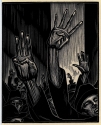



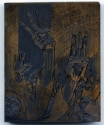











![Sketch from Dance of the Hours [a]](/sites/default/files/1985.1.287_thumb.jpg)
![proof from Dance of the Hours [a]](/sites/default/files/1985.1.399_thumb.jpg)
![Sketch from Dance of the Hours [b]](/sites/default/files/1985.1.286_thumb.jpg)
![proof from Dance of the Hours [b]](/sites/default/files/1985.1.469_thumb.jpg)
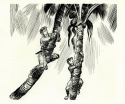
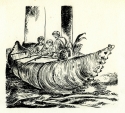



















![Untitled [the monster sees his reflection]](/sites/default/files/1981.1.1088_thumb.jpg)



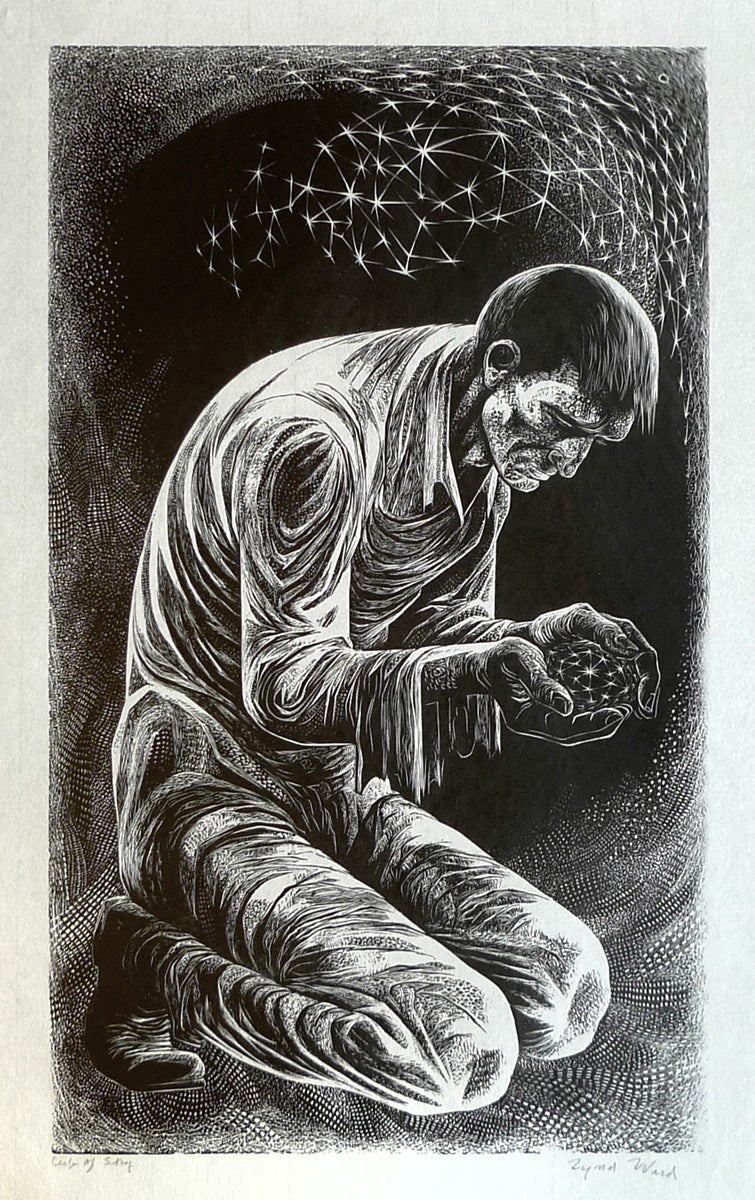


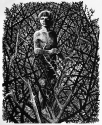

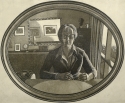
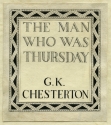
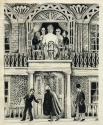
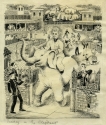
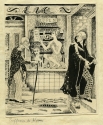
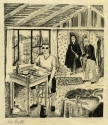
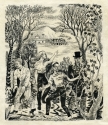



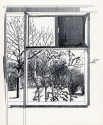

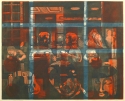









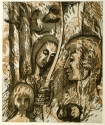
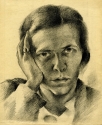







![Horned Dinosaur [study for Sunday Afternoon]](/sites/default/files/1992.2.484_thumb.jpg)
![Winged Dinosaur [study for Sunday Afternoon]](/sites/default/files/1992.2.485_thumb.jpg)

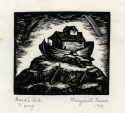
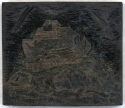

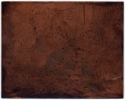
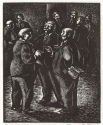
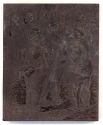
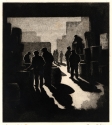

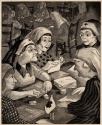
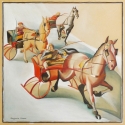
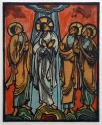
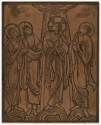
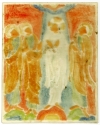

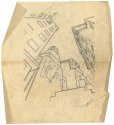
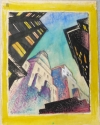


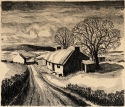
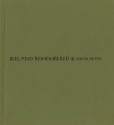

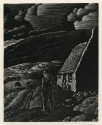





![Untitled [preliminary drawing for MoMA/Typophiles]](/sites/default/files/1992.1.120_det_thumb.jpg)
![Untitled [wood block transfer tracing for MoMA/Typophiles]](/sites/default/files/1992.1.125_det_thumb.jpg)
![Untitled [MoMA, Typophiles keepsake]](/sites/default/files/1992.1.117_det_thumb.jpg)
![Untitled [spectacles on a desk, Benjamin Franklin 1982 keepsake]](/sites/default/files/1992.1.73_det_thumb.jpg)










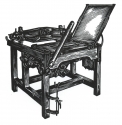
![Reflections [rejected proof, used as writing paper for letter]](/sites/default/files/1992.1.367_thumb.jpg)

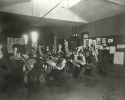
![The Haves and Have Nots [Pittsburgh series #2]](/sites/default/files/1988.34.76_thumb.jpg)
